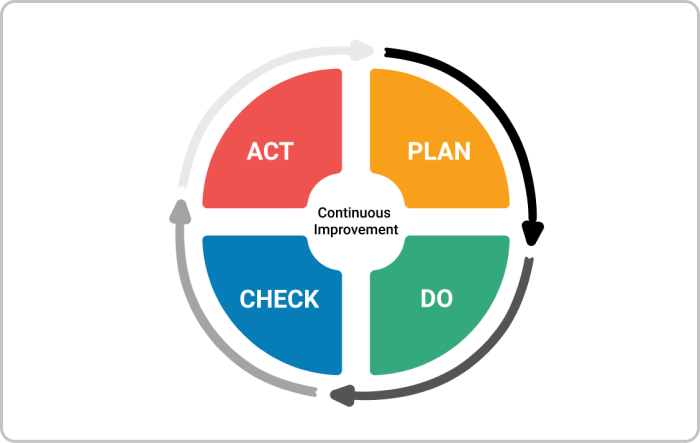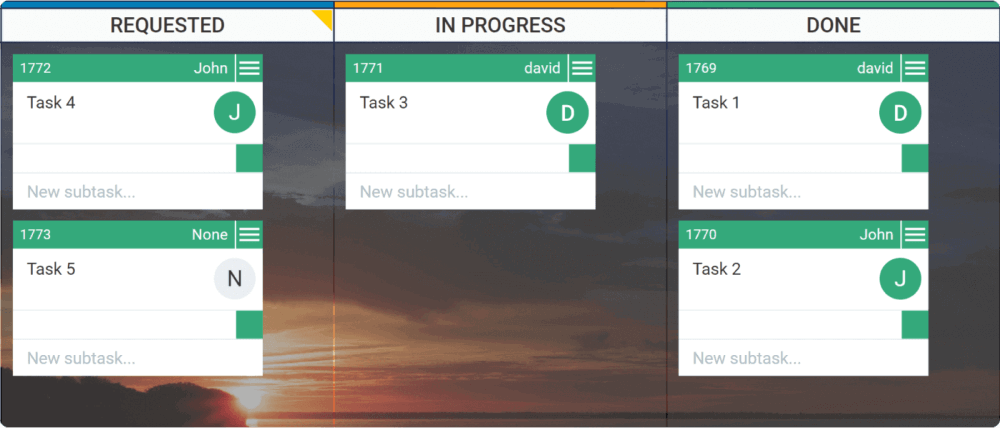Lean is focused on delivering value to the customer, but never at the expense of the employee. Lean systems believe that empowered employees, treated with respect, are essential for delivering value.
This means that the Lean principles not only can be employed by whole companies or whole teams but can even be adopted at the individual level, to make your life easier and your work more productive.
What Is Lean Concept?
Growing out of Toyota Production System (TPS), the concept of Lean has been recognized as an effective approach to project management. Ever since its foundation in the middle of the 20th century, it has been widely adopted by various industries and organizations.
The Lean concept is centered around delivering maximum customer value using fewer resources as possible through continuously working on finding new ways to improve the work process. At its heart is the concept of Kaizen, or continuous improvement and eliminating all forms of waste that slow down the process.
Lean is not just about using tools and techniques to increase process efficiency and productivity. It is a mindset, a way of thinking, that starts from within people.
The 8 Lean Concepts You Need to Know
The following Lean concepts can save you time, improve the quality of your work, and increase your value, no matter where you work or your job description. They can be practiced by anyone, anywhere.
1. Value
Value in Lean means everything your customer is paying for. Try to arrange your work in a way that has the most positive impact on the end customer, whether it is working more efficiently to speed time, working less wastefully to reduce cost, or working at higher quality to improve results.
2. Process Waste
Lean is focused on identifying and eliminating waste. Waste can be any process or activity that takes unnecessary time or materials. Eliminating waste in your own tasks can make you more productive and often shorten your work weeks.
The 7 wastes in Lean to eliminate are:
- Overproduction: Doing more work than is necessary.
- Waiting: Idle time waiting for tasks to be assigned, contingent tasks to be completed, or needed information.
- Transportation: Information or materials moving through too many unnecessary intermediaries or processes.
- Over-processing: Adding non-essential features or functions to tasks.
- Unnecessary motion: This can be physical motion or mental motion. Unneeded time spent looking for information, tools, or necessary resources.
- Defects: Work that does not meet acceptance criteria and therefore needs to be redone or corrected.
- Inventory: Overstocking because of eventual events such as unexpected demand, low quality, and more.
Your goal should be to do as much work as is assigned to you, to a high standard of quality, without exceeding what has been asked or assigned. In other words, achieve improvement through a Lean process.
3. Kanban
Basic Kanban board with Requested, In progress, and Done columns
Kanban was developed for workflow visualization to improve efficiency. On a personal level, Kanban can make your work easier and more efficient in several ways:
- Visualization. You can visualize all of your tasks and map every step of the process you are following on a Kanban board. This way you can never forget about something that's waiting on you. This visual management board will make your life much easier.
- Establishing flow. With a Kanban board, you can see where work is piling up. Organizing yourself to keep work moving through the system in an orderly fashion improves your work and makes you a more valuable teammate.
- Limiting WIP. A Kanban system only allows you to take on a limited amount of work at a time. Limiting the work in progress reduces multi-tasking and distractions, keeping you focused on one thing at a time and improving your overall productivity.
4. The 5S
The 5S method was developed to reduce waste and increase efficiency within an organization, but a clean and organized workspace also improves your personal productivity. It is comprised of 5 distinct steps:
- Sort. Sort what is needed in the area from what is not needed.
- Straighten. Arrange items so that they are ready for use. Keep things in the same place so they are easily located.
- Shine. Clean the workspace and equipment.
- Standardize. Learn about best practices from teammates and adapt them to your own workspace.
- Sustain. Maintain this standard and improve every day.
5. Kaizen
Kaizen is the principle of continuous improvement. Taking time to reflect on your work and productivity with the intention of continually getting better over time maximizes your own efficiency and productivity, and helps you revise your own processes to get better. One way to achieve Kaizen is with PDCA problem-solving:
- Plan. Identify the area that needs improvement and state a measurable goal for improvement. While goals will vary greatly between individuals, some areas to evaluate might be reducing the amount of time spent on tasks, reducing errors or re-work, or streamlining to limit repetition and redundancy. Plan for how you will achieve those goals.
- Do. Implement your plan.
- Check. Review your results against your benchmarks and determine whether your plan was effective.
- Act. If your plan was ineffective, revise your plan and repeat the process. If your plan was effective, act to make it your standard behavior.

Repeat this process, striving for ongoing improvement.
6. Andon
Andon is best practiced within a whole organization or team but can be practiced individually. Andon is the concept of alerting the entire team when something has gone wrong, inviting collaborative problem-solving, and directing attention to the quality of the product rather than the speed of production.
In the Toyota factories, Andon famously allowed any worker to stop the production line to solve a quality issue so that no employee was ever alone with a problem. When properly used, the principle of Andon results in the following:
- Better design of products
- Higher product quality
- Improvement of internal product testing
- Greater sales
While many workplaces do not foster a culture where front-line workers can halt production to address a quality issue, Andon can still be internalized by clearly articulating when you have a concern, actively seeking support with problem-solving, and actively offering support to others.
7. People First
Lean concepts place people above processes, seeking to create workplaces where everyone can achieve their maximum potential. The Lean principles of how people should behave toward each other aren't simply good business practices: they are good life practices.
8. Respect for People
Respect is a core principle of Lean thinking and should be applied to everyone within the company, as well as customers. Respect in Lean is expressed by actively asking questions and seeking to learn from others, mentoring them in continuous improvement, and eliciting cooperation and collaboration toward eliminating waste.
In conclusion:
Applying the principles and tools of Lean to your own work and your own processes, treating your employer as a customer, and adding value for them, is difficult when looked at from a certain perspective. Striving for perfection isn't an undertaking for the weak or lazy.
From another perspective, though, adopting processes that create clarity, improve the quality of the work, take less time, and build stronger relationships ultimately not only shorten the workweek but make it easier. Lean methods don't necessarily need to be applied to whole companies; they can be applied to your personal work and to your whole life.
Furthermore, there is a strong likelihood that adopting these concepts and behaviors will be infectious, and that, when treated with respect, others will treat you more respectfully.
If you remain engaged, keep a tidy workplace, actively solve problems, and strive for constant improvement, it is possible that others around you will start to respond in kind. Ultimately, you will find yourself working in a team that is more efficient, more collaborative, and delivers higher quality work. The benefits of Lean concepts can go far beyond yourself.

Alex Novkov
Content Lead
Energetic and practical, passionate about social media, creative writing, heavy weights, and outdoor activities.




